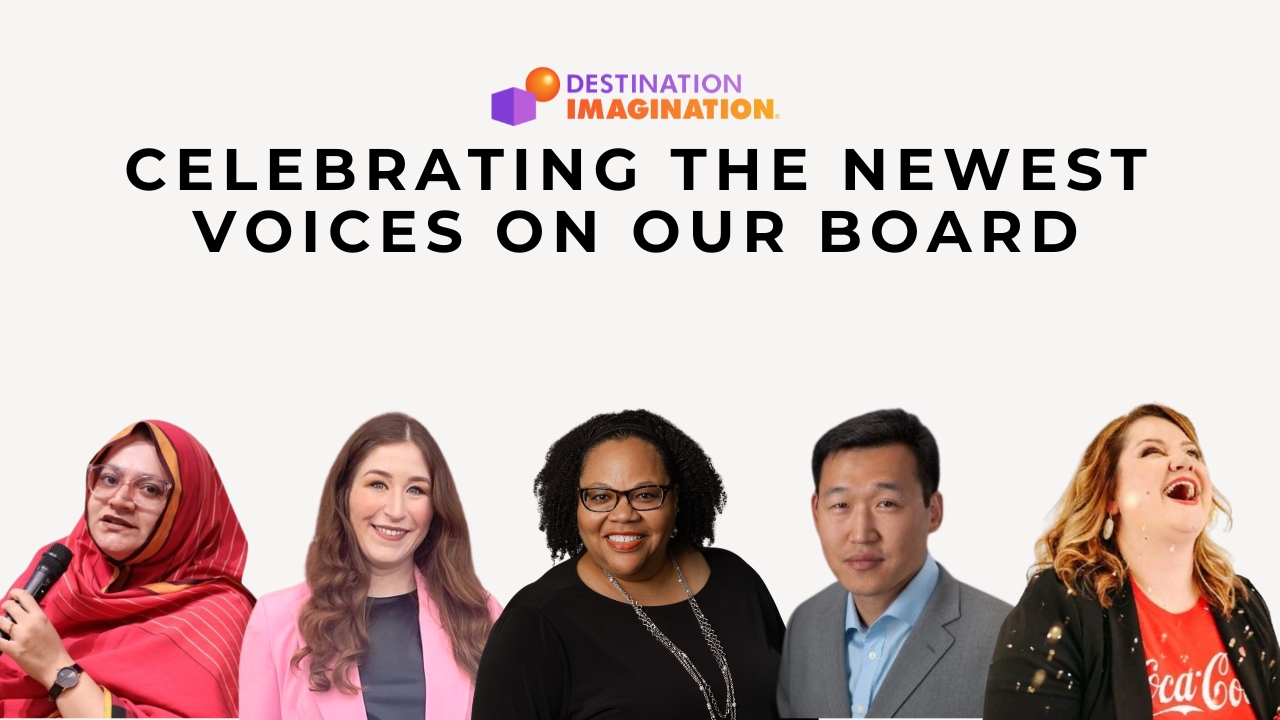I’ve always been inquisitive. When I was a kid, I loved watching science documentaries. I loved learning about the world when I couldn’t experience it firsthand. I was captivated by how the stunning spectacles we observe can be explained with equations and theorems.
I also loved doing experiments and building things. My mom saw that in me and was always looking for ways to nurture and channel those interests into meaningful activities and projects that would help me to grow my STEM identity and love for learning.
That’s why, when I learned about Destination Imagination, I knew I wanted to participate. I felt like it was the best program to explore science and technology in a fun and creative way. Since DI wasn’t offered at my elementary school, I decided to independently organize a team.
Our team competed in the Scientific, Technical, and Engineering challenges. One year, my team member and I worked together to construct a large, motorized fan from scratch to use in our challenge solution. We started off by researching how to build a fan. But because we had a small budget, we needed to be resourceful and get creative. After a few weeks (and a lot of trial and error!), we had done it. We had built a working fan out of different household materials, including cardboard and a motor we re-purposed from an old shoe cleaning machine.
Year after year, we learned so many new skills and explored so many different subjects–everything from quantum mechanics to computer hardware to stage scenery. As we became more experienced, we continued to push our creative boundaries and create more complex solutions, allowing us to grow and explore our own STEM identities. And as the complexity of our solutions increased, so did the amount of time we needed to work on them. In order to ensure we had our solution finalized by our tournament, we had to create and follow a project timeline.
We utilized Project Management Institute’s (PMI) 5 tools to do this initiating, planning, executing, controlling and monitoring, and closing. This helped us split our project into smaller, more manageable tasks and set deadlines and goals for each task. Another useful strategy was recognizing what each team member could bring to the table and then using those talents and skills to the best of our abilities as we worked together on our solution.
In the six years I competed in DI, our team won at the state and global levels, including earning second place at Global Finals 2021. Without a doubt, Destination Imagination had a profound impact on me. It taught me how to manage a complex project more efficiently, how to overcome failure, and how to speak in front of an audience.
In June 2022, I had the privilege of speaking at the Girls Build Solutions conference on behalf of the Million Girls Moonshot. I’m one of 16 Flight Crew members across the country and our goal is to get more girls engaged in STEM. At the conference, I not only had the opportunity to share my STEM story, but was invited to sit on a panel with the amazing NASA aerospace engineer, Dr. Swati Mohan, and talk about why it’s so important to get more girls involved in STEM.
There are not enough girls in STEM–especially with stereotyping and stigma toward girls. To girls everywhere, please remember that there are endless possibilities and opportunities for you out there. Even if you’re not completely sure what you want to pursue, STEM is so expansive that there will be a field that is perfect for you. Just keep looking and don’t be discouraged by stereotypes or discrimination.
The Million Girls Moonshot is now accepting applications for its next Flight Crew cohort. Female students interested in STEM can apply here.
About the Author: Nikhita Penugonda is an 11th grader in Washington state who loves math, astronomy and physics. From a young age, she has been very passionate about STEM and participates in Destination Imagination. She has many hobbies and enjoys camping, hiking, rowing, stargazing, reading, and playing video games! In the future, Nikhita aims to study astrophysics and computer science in order to make new discoveries about the cosmos.






